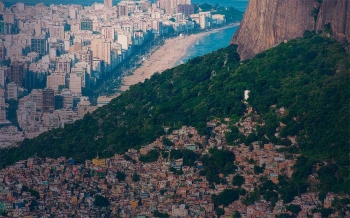Inequality rise reaches 17 consecutive quarters, says FGV Social
From the end of 2014 until the 2º quarter of 2019, the income of the poorest 50% of the population fell by 17% and that of the richest 1% grew by 10%.
FGV Social launched on August 15 the research "The Escalation of Inequality" processing first hand PNAD Continuous microdata. As the previous historical series was adjusted by IBGE, the study investigated forward and backward changes. The research shows that per capita household earnings inequality has been increasing for 17 consecutive quarters compared to the same month last year. This is the longest period of concentration in the Brazilian historical series. Not even in 1989, the historical peak of Brazilian income inequality, was preceded by a concentration movement for so many consecutive periods.
From the end of 2014 until the second quarter of 2019, the income of the poorest 50% of the population fell 17% and that of the richest 1% grew 10%. By 2014, social welfare grew at 6.5% per year (because income grew and inequality fell). However, just two years later, it fell 6.87%. More than a long recession followed by a slow recovery, the country has moved from inclusive growth to a income concentration recession. Inequality helps to understand the dramaticity and duration of the picture.
The biggest loser of the crisis was an individual aged 20 to 24 years, that had a 17% fall in labor income (the average for the all the population was 3%). Other traditionally excluded social groups were also greatly affected by the crisis: the black population had an 8% drop in income; illiterate, 15%; residents of northern and northeastern Brazil, 13% and 7%, respectively. From the traditionally excluded groups, only women had a 2% income increase. The past few years have improved for those who have studied more, and as women are more educated, they have made real gains.
The increase in the value of education was together with that of unemployment the great drivers of inequality in general. In the critical period, six million Brazilians moved to zero-income households. The last period of the series brings some prospect of improvement: lower increase in inequality of the escalation period, a sign that may have reached the top. There is already an advantageous exchange of more occupation for lower incomes of the employed, the general average income is growing at 1.75% per year, higher than the projected PIB per capita that would soon be released.
For Marcelo Neri, director of FGV Social and author of the research, during the crisis, Brazilians unlearned some important lessons:
“We created fundamental safety nets, such as Bolsa Família. Early in the crisis, the programme's benefit was frozen in nominal terms amid 10% annual inflation, and then, despite being cheap in tax terms, its coverage was not extended during the crisis. Extreme poverty increased by 40% between 2015 and 2017,” he said.
According to the economist, grassroots programs not only fight poverty but also make the economy wheel spin. Neri added that inequality throws sand in the gears of the economy and that to understand the crisis, it is not enough just to look at the mean; the rising inequality is also a key component in the perpetuation of the crisis.
“We are not returning to the same level of poverty we had before it fell, fortunately. But the projection is that if we do not reduce inequality, especially in relation to the distribution base, even though we grow by 2.5% in a balanced manner until 2030, we will only go back to where we were in 2014.
All the research materials can be accessed on the FGV Social website.






